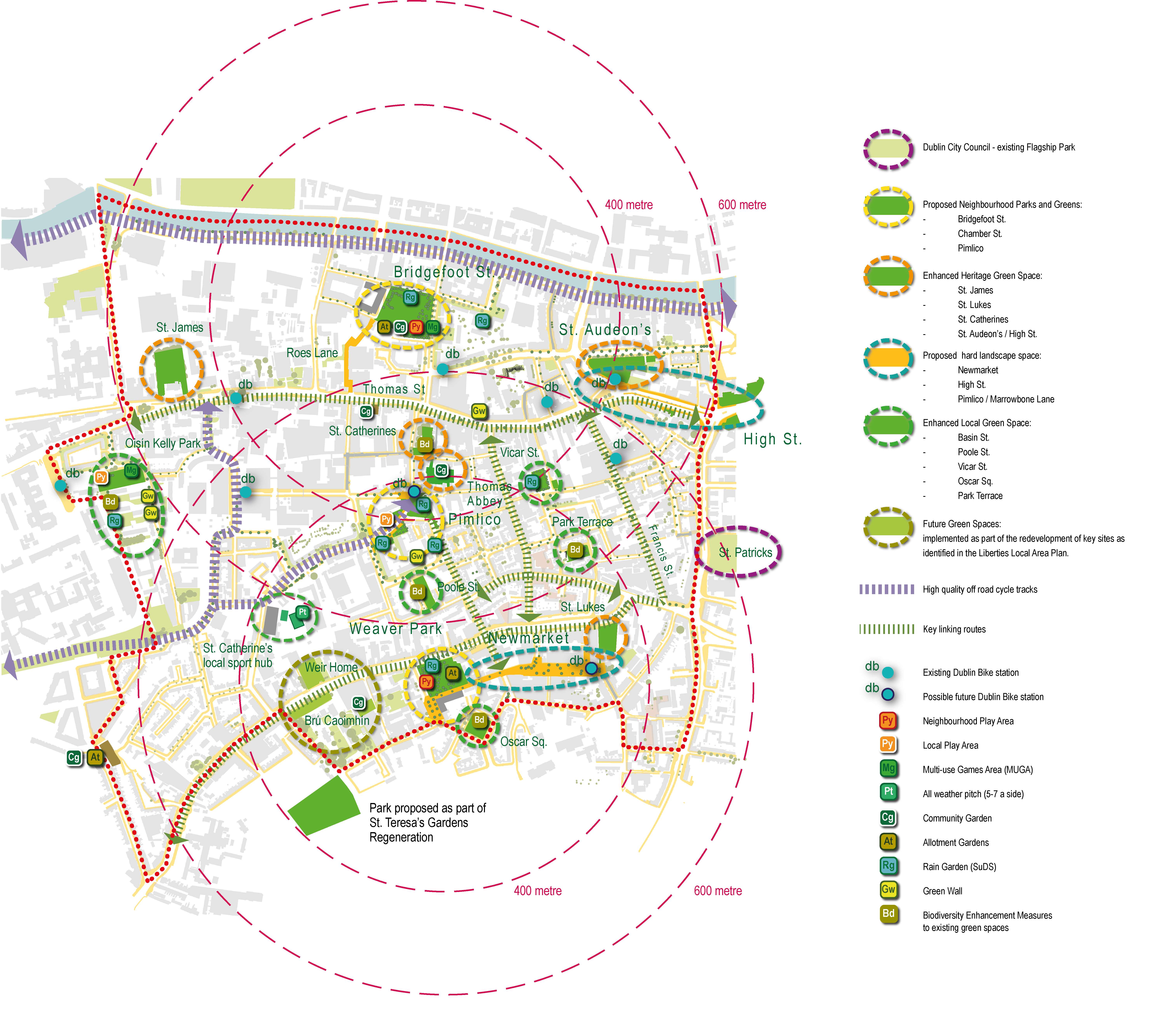
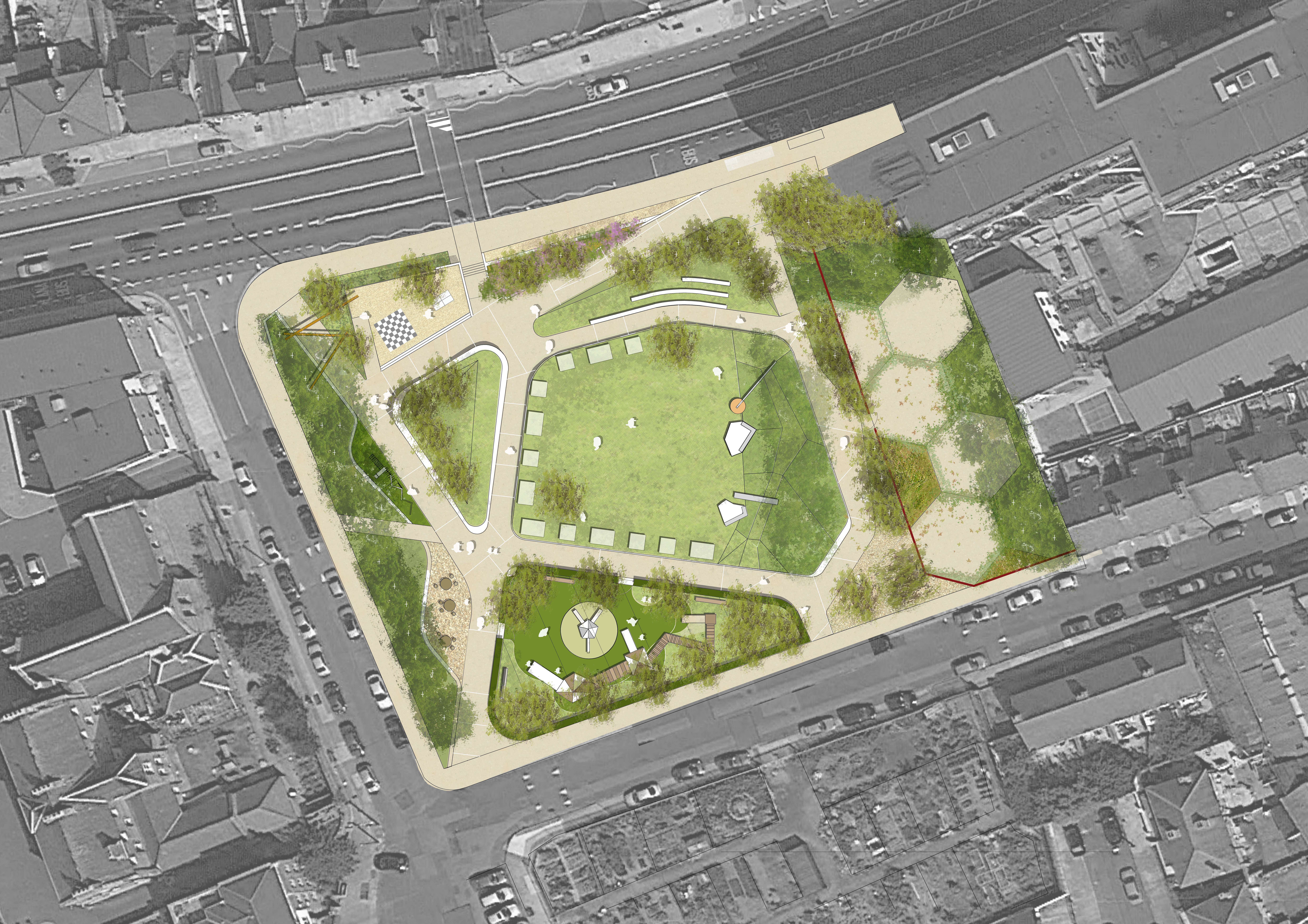
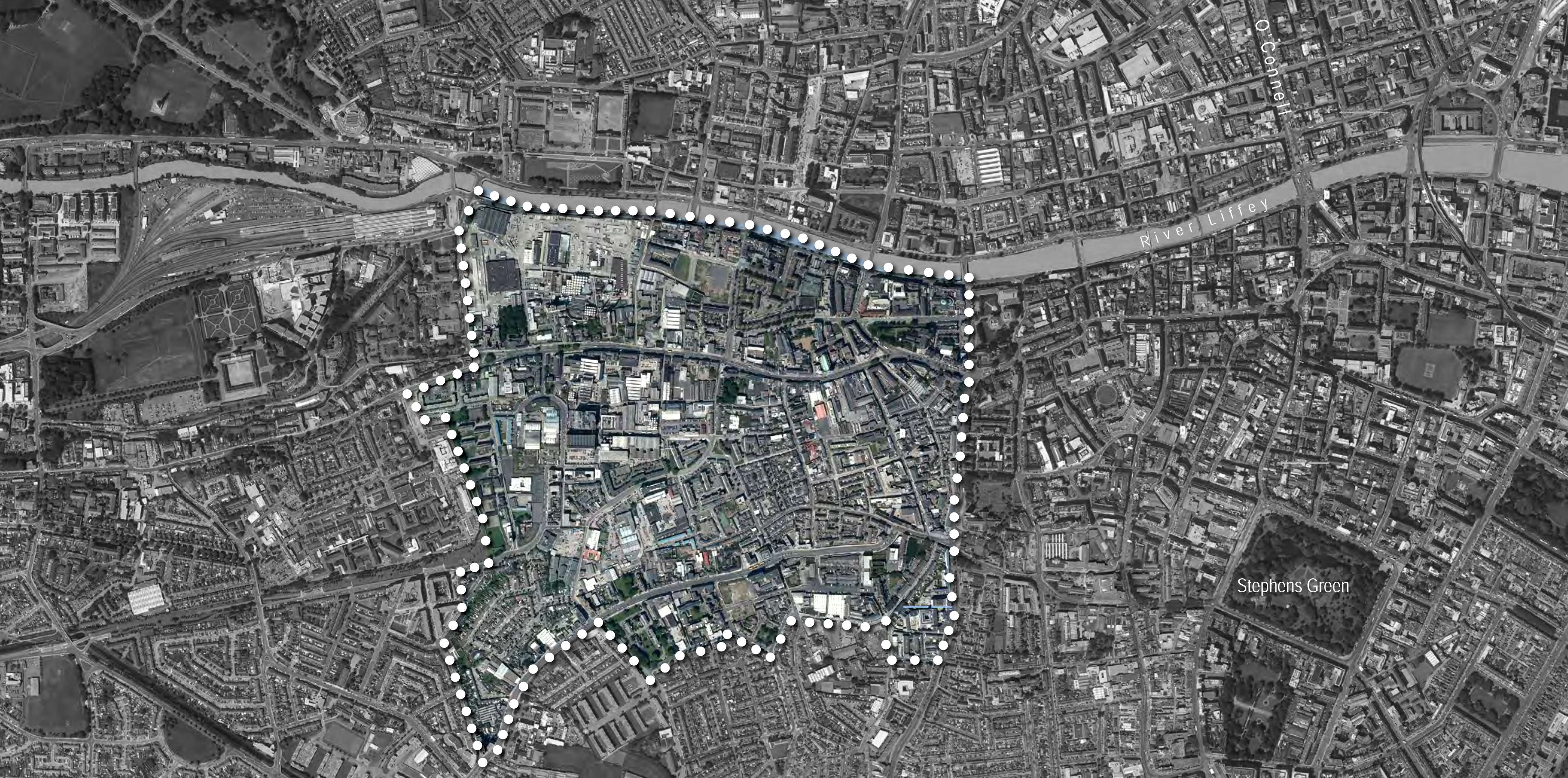
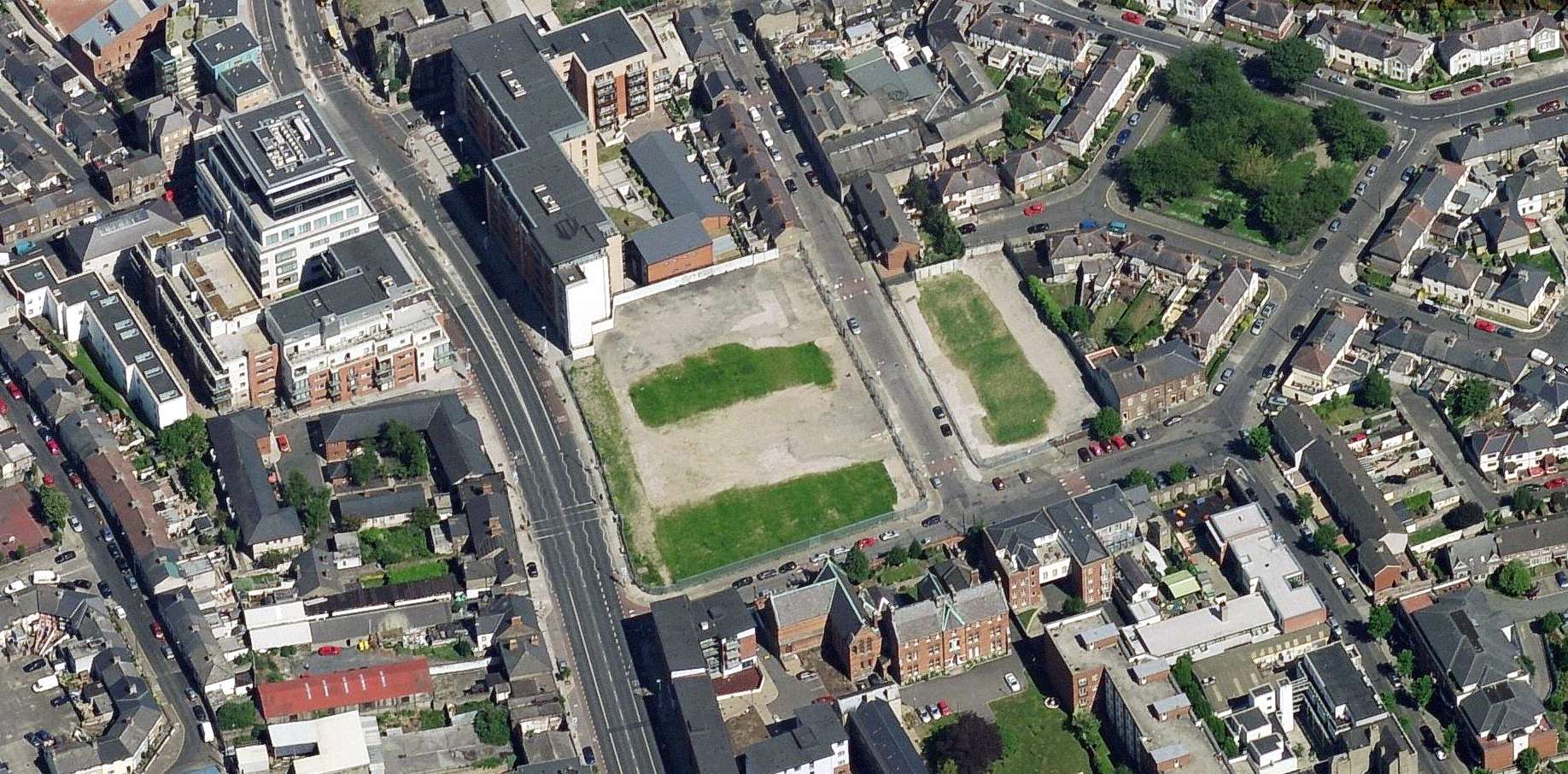
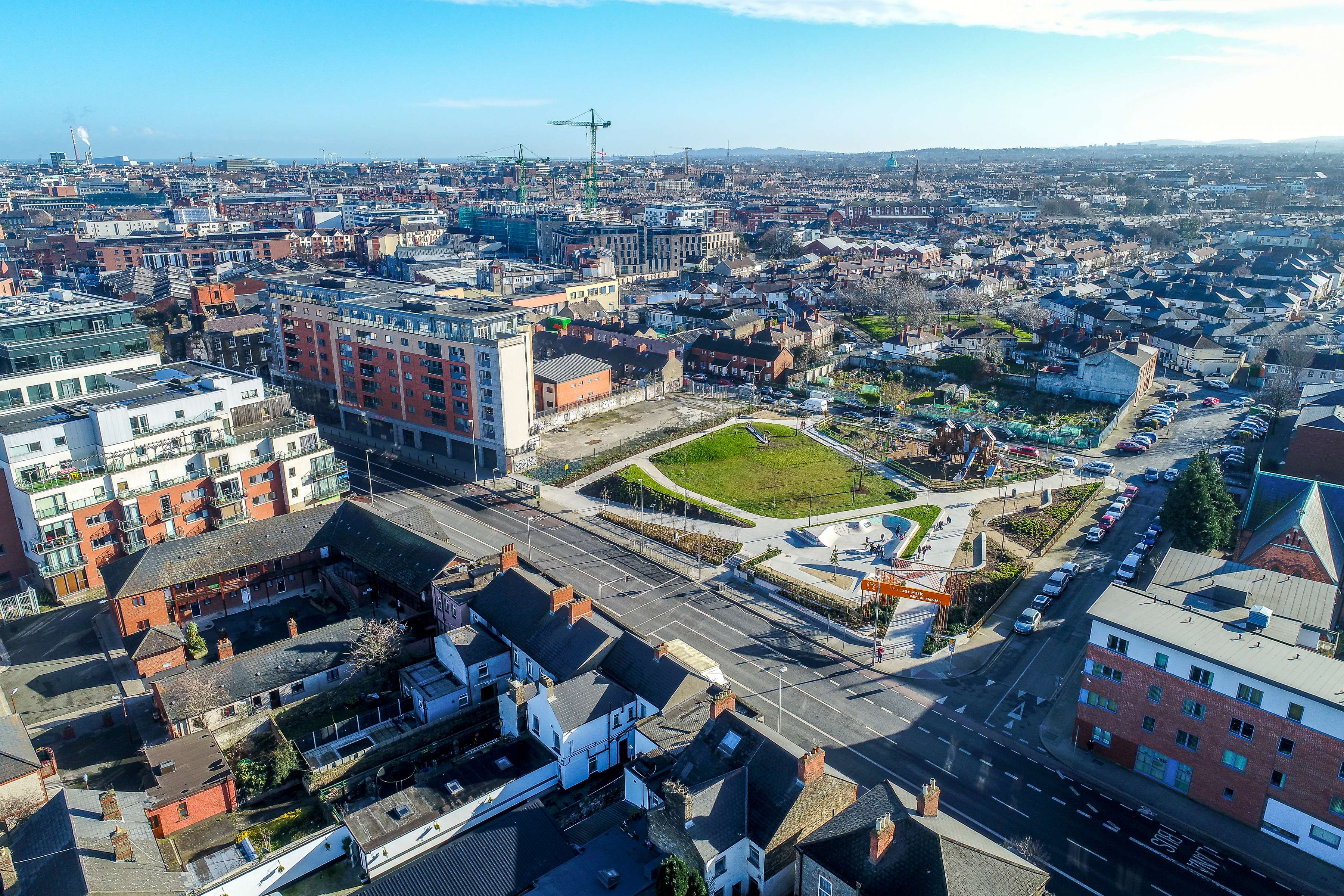
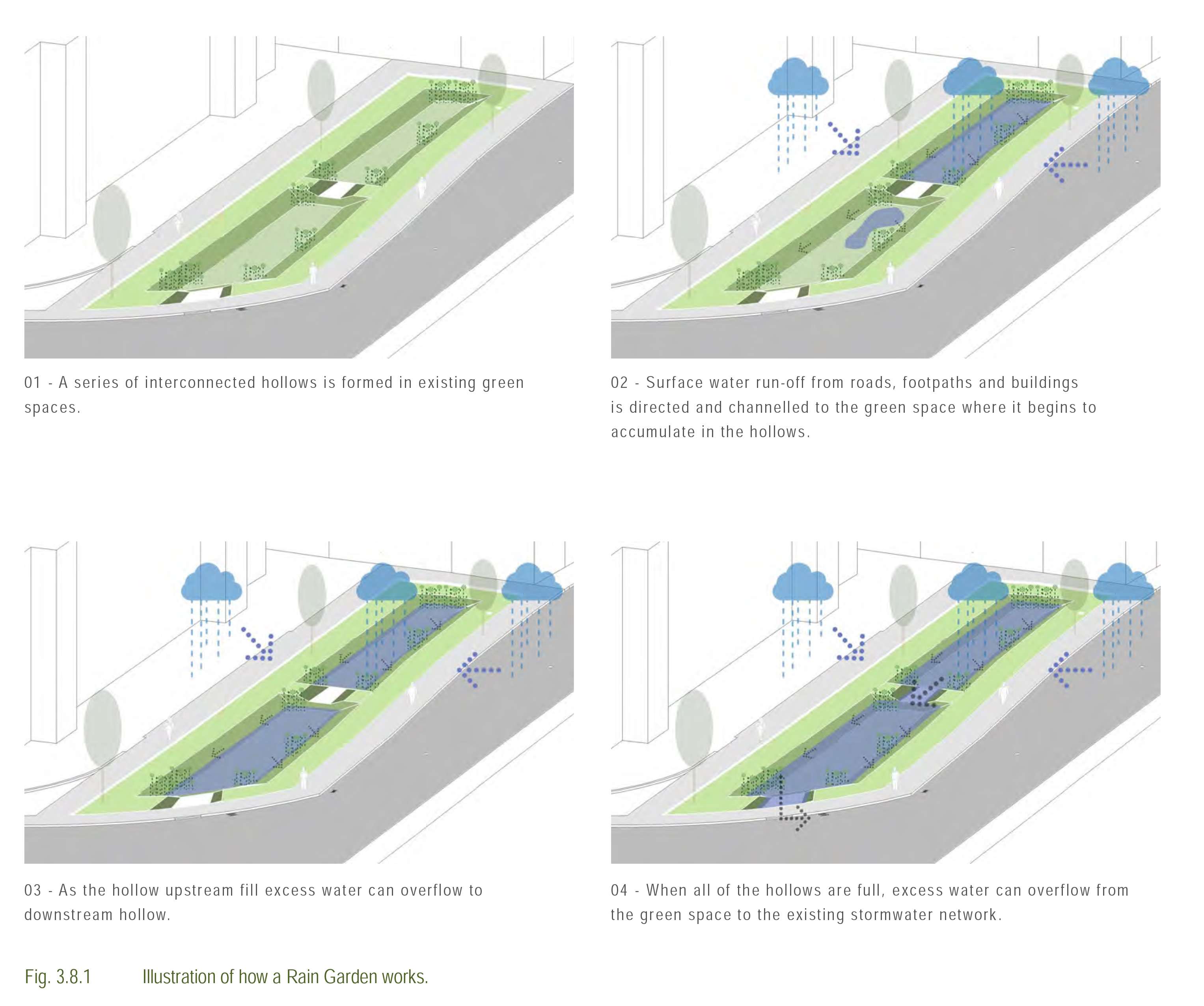
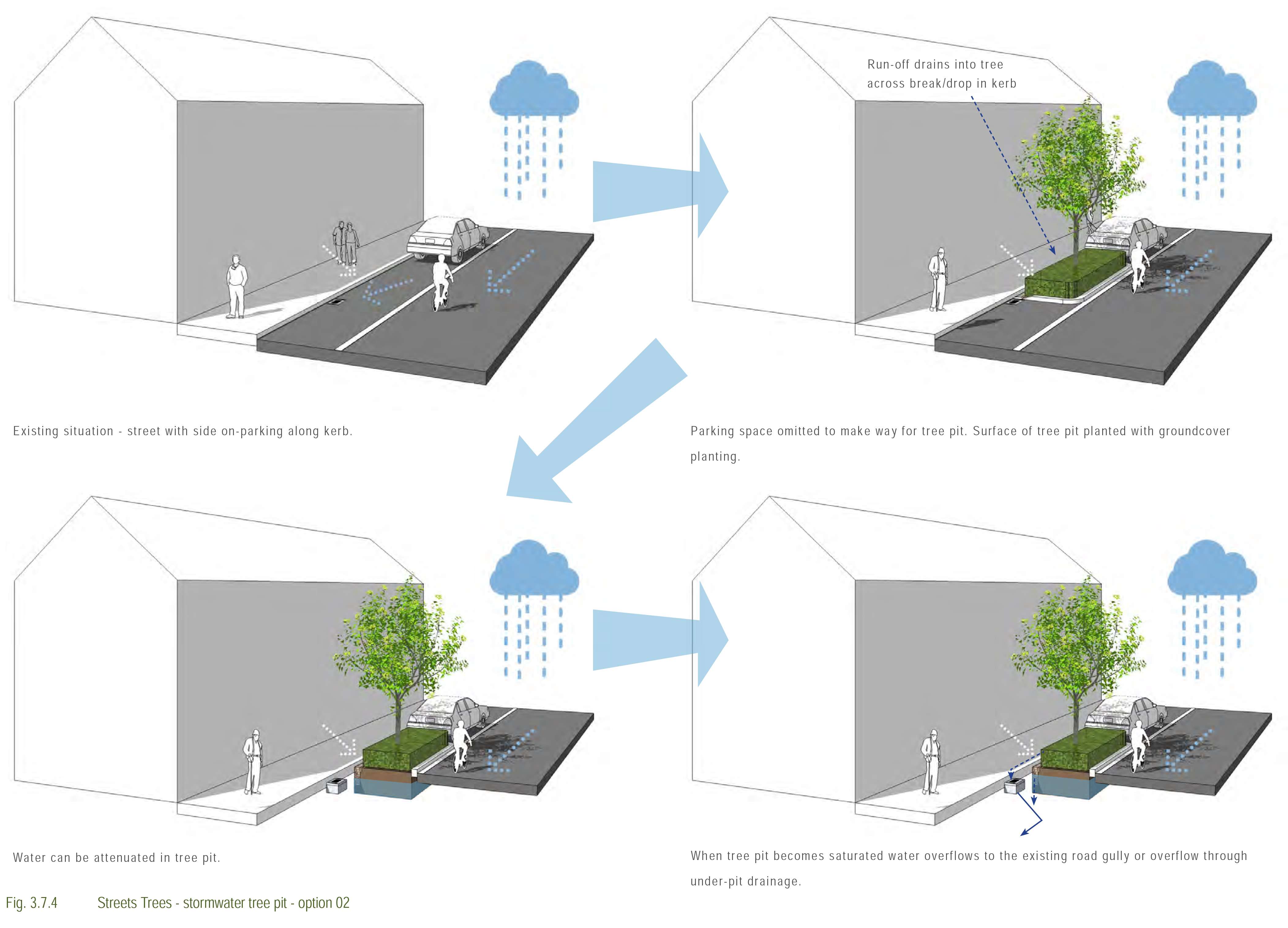
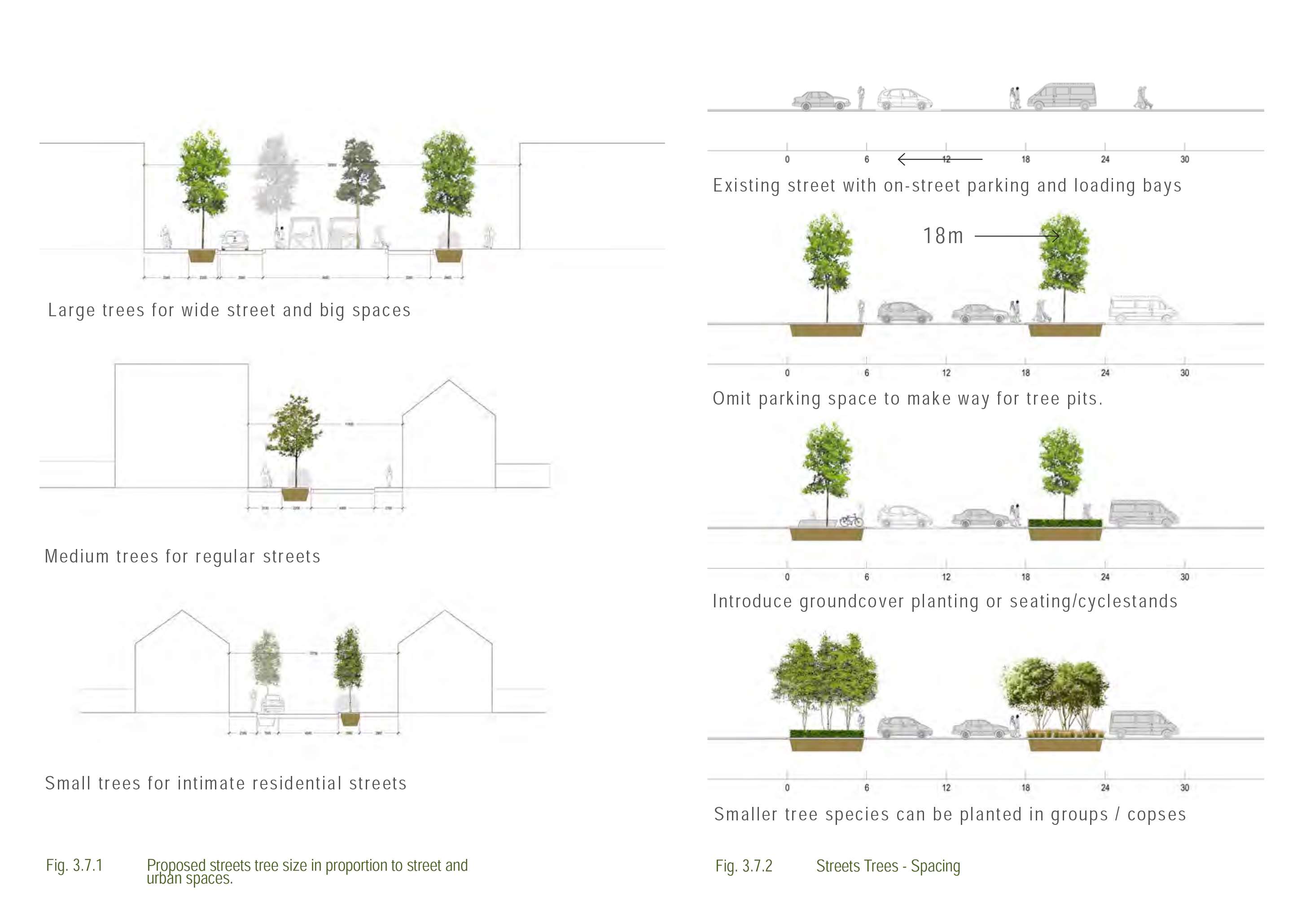
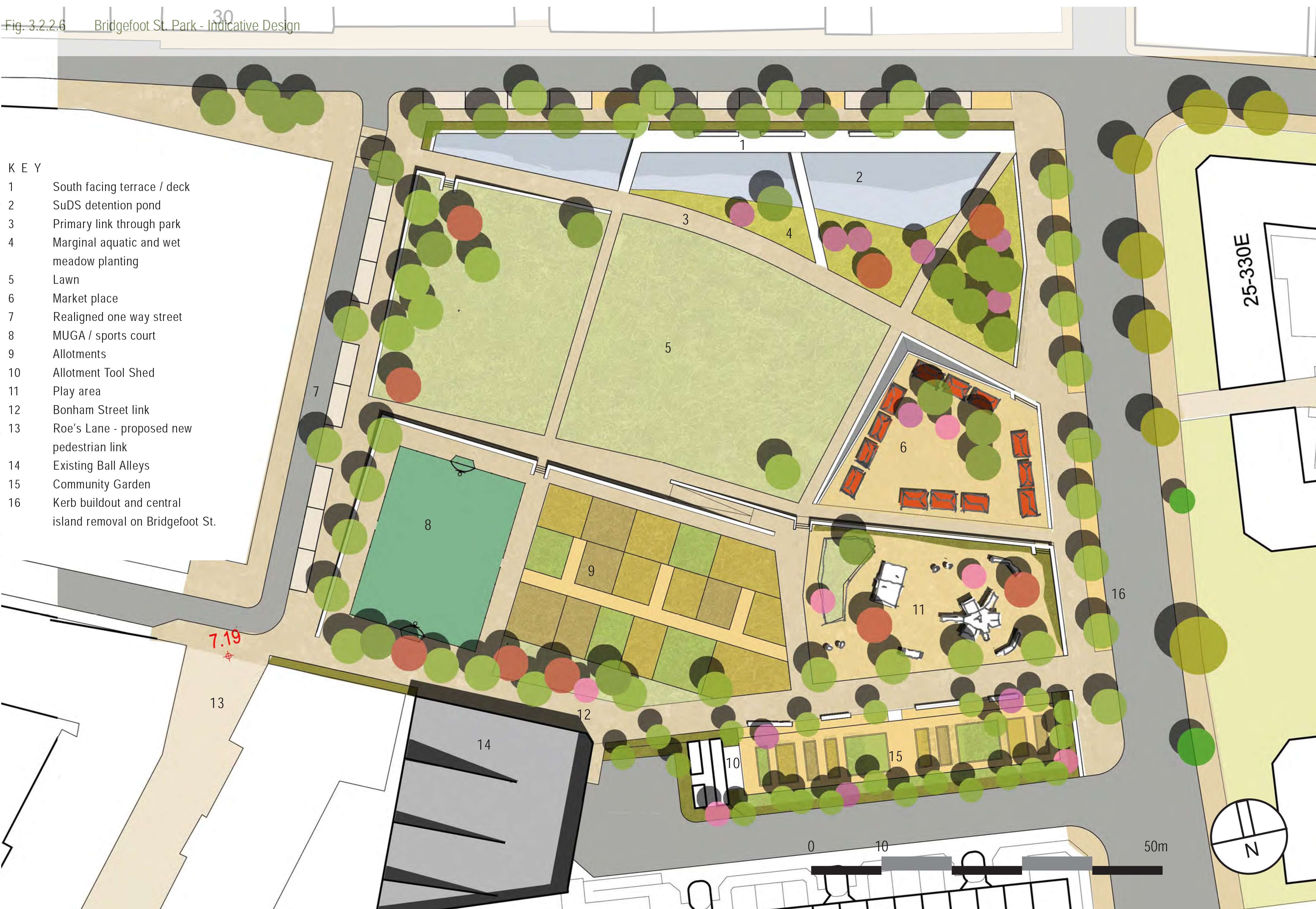
The Liberties Greening Strategy
Context
The Liberties Greening Strategy was published by Dublin City Council in 2015. The strategy has been prepared by the Parks and Landscape Services Division with the assistance of Áit Urbanism + Landscape and Mary Tubridy & Associates. The Strategy focused specifically on projects that had a realistic chance of being implemented and thus proposals are located primarily on sites that are within the charge of Dublin City Council.
The urban development of the Liberties stretches back to the mediaeval period when monasteries were established and suburbs developed outside of the City Walls. The Liberties has through history always been a gritty industrial area and today is a patchwork of social disadvantage represented by social housing complexes and a new more affluent community attracted by living close to the city centre. Presently the Liberties is devoid of any high quality public green spaces a legacy of centuries of poor planning; 93% of the surface area is covered by buildings or hard surfaces.
The Greening Strategy proposes to create new urban parks on the sites of 2 demolished flat complexes. The parks will be a focus for all of the communities and will provide for a range of recreational and social activities presently not catered for. The strategy also sets out measures to regenerate heritage green spaces associated with deconsecrated church yards, improvement to local open spaces and the remaking of a market square at Newmarket.
The strategy has a strong Green Infrastructure focus and a range of measures are put forward to improve habitat and biodiversity and improve water management through innovative rain gardens and stormwater tree pits. An accompanying Green Infrastructure Benefits report measuring the impacts of the strategy was also prepared.
The strategy puts forward a vision for a network of new urban parks, making accessible heritage green spaces and the refurbishment of existing green spaces and play areas in the historical Liberties area of Dublin city. In addition, the strategy puts forward an area wide tree planting strategy which champions best practice and promotes innovation.
The Liberties is amongst the poorest of Dublin’s neighbourhoods and today there remain pockets of significant disadvantage having suffered significant urban decay and dereliction. Large tranches of once narrowed frontage streetscapes have been completely lost. Much of what was developed in its place failed to heal the urban street fabric and sense of place. During the late 19th to early 20th century; condemned tenements were pulled down and old industries cleared to make way for Social Housing Blocks. The widening of roads also had a detrimental impact; rupturing the historic streetscape of fine grain building frontages and the loss of the human scale of enclosure.
The Liberties has always been the poor relation to the Georgian part of the City that was arranged around spacious squares and wide streets. The urban form and structure of The Liberties is more organic and haphazard, reflecting its medieval origins and industrial functions. With the exception of St. Patrick’s Park, The Liberties has not enjoyed the benefits of benevolent green space making on any significant scale.
Whilst an area steeped in history, stories and cultural capital; The Liberties remains an urban area with many physical place-making and quality of life problems. There is still considerable dereliction in the area; an aspect exacerbated by the Celtic Tiger era when large sites were accumulated for large scale redevelopments. There are places where the fabric of streets and spaces breaks down and creates weak legibility and hostile ‘no-man’s land’ or ‘no-go’ areas. The area is severely under-provided with high quality urban green space and this is compounded by the fact that most households live in apartments and small row houses with little or no private green space.
The property crash and economic crisis of 2008-2016 put a halt to almost all of the ambitious redevelopment proposals within the area. It was thought that many of the proposals for the area would not go ahead in the form originally envisaged as market conditions changed and future proposals would need to adapt accordingly. A benefit of this hiatus is that it provided the Parks and Landscape Services of Dublin City Council, the local community and stakeholders the time and space to reflect on a future vision for the area unhindered by the pace and vigour of market led development.
The Liberties is a densely populated area with approximately 15,000 residents within a single square kilometre. Based on the 2011 Census approximately 70% of the population live in apartments and for those that live in houses very few have usable private gardens. In 2011, 15% of the population is under 18 years of age and an analysis carried out on under 12’s reveals the concentration of this group in particular areas; predominantly associated with Local Authority flat complexes.
The Liberties area was extremely deficient in quality green space. Whilst St. Patrick’s Park is proximal to the eastern end of The Liberties, the only quality green spaces in the area was Park Terrace, Oscar Square, St. Audeon’s and St. Catherine’s Park. Whilst these green spaces are attractive; they are all small and support only a limited range of passive recreational activity; with no play areas, sports facilities or space for growing food. Accessible quality public green space is provided at a rate of 0.7sqm per person, which is in stark contrast to an average of 49 sqm/person for Dublin City as a whole. Tree coverage in The Liberties was sparse and good quality street trees are only found in a few small areas. There are approximately 1200 trees in The Liberties area equating to a canopy coverage of less than 5% of the plan area.
The Greening Strategy was timely in that it provided a platform to take stock of the existing urban condition and propose a long-term strategy for its improvement and uplift and in particular consider opportunities to address the inadequacy of the areas green space provision and public realm quality in general. The strategy was a key to catalysing the redevelopment of the areas many vacant and under-utilised sites. Not development for development’s sake but high-quality redevelopment; high quality housing, high quality work, high quality learning spaces and an excellent public realm that make The Liberties among the most liveable and desirable of inner city neighbourhoods.
The Strategy
The Greening Strategy is a combination of proposals for new green spaces, enhancement of key streets and civic spaces; refurbishment and enhancements to existing green spaces, greening measures for streets and measures to improve linkages and legibility through the area. In considering the strategy at an area wide scale consideration has been given to ensuring a balanced distribution of play facilities, amenities and productive spaces across The Liberties.
New Green Spaces
Two proposed new green spaces at Bridgefoot Street and Chamber Street; both on the sites of demolished social housing complexes. These parks were proposed to be of a neighbourhood scale. Each park was to accommodate a high quality and secure play area, allotments and/or community gardens, opportunities for informal play, flexible open areas for events and passive recreation and a high proportion of greening in the form of tree planting, hedging, lawn, meadow and groundcover planting.
Civic / Hard Landscape Spaces
The Greening Strategy sets out proposals for High Street and Newmarket. Both spaces will be predominantly hard landscape; High Street is a busy citywide thoroughfare and Newmarket will be a flexible market and events space with traffic access for residents and businesses.
Revival of Existing Green Spaces
The Greening Strategy seeks to capitalise on the value and benefits of the existing green spaces such as improving access to green spaces associated with de-consecrated churches and archaeological sites; wholesale regeneration of local green spaces and small enhancements to existing well-functioning green spaces. The strategy seeks to ensure all children living in The Liberties are within five minutes of a high quality and secure play space and all residents are within 2-5 minutes of high quality green space. The strategy will also provide a long-term framework for food production in the form of allotments and community gardens within The Liberties.
There is considerable scope to reflect the rich history of The Liberties area in the design of each green space and park. This will be achieved in a number of ways; the naming/branding of the Park, picking up on historical footprints in the green space layout, bespoke items of furniture and/or a sculpture and interpretative signage. Some of the spaces such as Bridgefoot Street Park, St. Catherine’s, Pimlico, Newmarket and St. James’s can be linked into the established tourist walking trails.
Sustainable Water Management
In developing the Greening Strategy, the project team explored ways in which the implementation of green space projects and greening measures can make a positive contribution to water quality and divert surface water from the sewer network. A number of principles emerged as being applicable to the area:
- New parks and green spaces will be self-sufficient for surface water drainage by; using porous hard landscape surfaces; incorporating swales, wetlands and/or rain gardens within green spaces and draining surface water off hard surfaces to large free draining tree pits and planting beds.
- Replacing surplus hard standing with soft landscape and where appropriate and feasible developing rain gardens.
- Introducing tree pits along streets and where feasible diverting surface water run-off from roads and footpaths to large free draining tree pits. The above measures will also assist in managing and mitigating local flood risk by releasing additional capacity within the drainage network to accommodate exceedance.
Weaver Park Proposal
A new 5000m2 neighbourhood park on the site of the demolished Chamber Street flats. The site had been given a working title of Weaver Park; which reflects the history of the area as a centre of weaving and linen manufacture. The design of the park is shaped by the following core principles:
- A park that is accessible to all and socially inclusive; providing recreation and amenity to all age groups and a unifying space for the entire community.
- A park that is designed to be flexible and can adapt to cater for all types of uses and activities
- The park is seen as a playable space with opportunities for play structured and informal throughout the park. In particular the use of soft landscape features and planting to create places for children to explore and make their own.
- A park that is skate friendly. Whilst a skate park is not proposed; in the detailed design of the Park opportunities for skate boarding will be incorporated. The Park design will also support the use of the space as a loop for children using scooters, rollerblades and learning to cycle.
- A Teen friendly park with places to hang out, socialise and feel safe and welcome.
- The park design supports active living; an attractive warmup / warm down space for runners and walkers and a calm sheltered space for activities such as Yoga or Tai Chi.
- A park that creates a calm oasis while also stitching into the urban fabric and addressing the streetscape.
- A Park that is an attractive and green space that creates new habitats for local biodiversity (Birds and Insects).
- Reflects the industrial heritage of the site and the Liberties in the design of park features.
- A park that provides a location for the local community to display art, music and cultural events.
Áit Urbanism + Landscape successful tendered for this project in 2015. In collaboration with the Parks and Landscape Services of Dublin City Council, and the wider team of design consultants, the park was completed and opened to the public in September 2017.
Benefits of implementing the Greening Strategy are:
- Enhancing the biodiversity of the area by improving habitats for native flora and fauna.
- Provide for improved air quality with substantial additional tree planting to remove pollutants.
- Tree planting will also make a contribution to carbon sequestration.
- Diverting water from the 19th century sewer network; resulting in energy and cost savings in wastewater treatment and improved water quality by reducing overflow spills to watercourses downstream.
- Managing local flood risk by designing infrastructure to accommodate exceedance in the drainage network.
- During hot summers such as that experienced in 2013; the green spaces and street trees will provide shading and cooling.
Qualitative benefits of the Greening Strategy which are more difficult to measures but are equally important include:
- Enhanced landscape quality and positive ‘sense of place’ which in turn will support higher property values and rental yields.
- Enhanced presentation of local heritage sites for the benefit of local residents, workers and also city visitors.
- Environmental education resources for local schools and adult training initiatives.
- Enhanced health and well-being of residents through recreation and access to high quality urban landscape.
- Improved linkages for walking and cycling; providing shorter routes and enhanced permeability.
- Attract and support inward investment in high quality work space and learning facilities and investment in evening economy and tourist accommodation.
As a direct result of the forward thinking and landscape planning approach by the landscape architects of the Parks and Landscape Services of Dublin City Council, the following projects that were identified within the Liberties Greening Strategy have been built, are on site / near completion or at tender / design stage.
Weaver Park, Chamber Street, The Liberties Dublin 8: Complete
St Audeon’s Park, High Street, Dublin 8: On site -near completion
Bridgefoot Street Park, Dublin 8: At Tender Stage
Thomas Street, Street Tree Planting (planters and seating): Complete
High Street, Street Tree Planting (planters and seating): Complete
Patrick Street, Median Tree & ornamental planting: Complete
High Street, Median Tree & ornamental planting: Near completion
The success of the Liberties Greening Strategy as a landscape planning tool has led to another greening strategy study to be undertaken by the Parks and Landscape Services division of Dublin City Council for the North East Inner City area of Dublin. This strategy is due to be completed in the summer of 2018.
A link to the final published The Liberties Greening Strategy docuemnt available from the website of Dublin City Council:
http://www.dublincity.ie/sites/default/files/content/RecreationandCulture/DublinCityParks/Documents/liberties%20greening%20strategy.pdf
A link to the final published The Liberties Greening Strategy docuemnt available from the website of Dublin City Council:
http://www.dublincity.ie/sites/default/files/content/RecreationandCulture/DublinCityParks/Documents/liberties%20greening%20strategy.pdf
